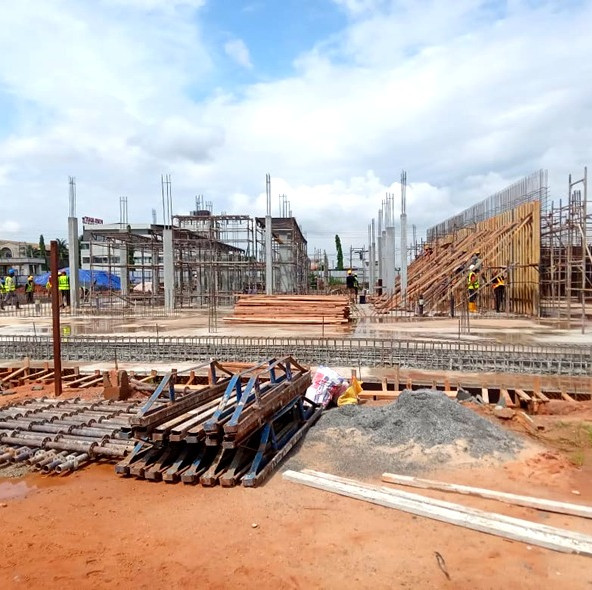MOWAA Institute hosts inaugural seminar on West African archaeology
September 25 2023
The Pavilion – a state-of-the-arts collections and research facility – has been carefully selected to be the first flagship institution of the Museum of West African Art. Once built, the Pavilion’s extensive lab facilities and dedicated specialized equipment will be a significant boost to the capability of art management, conservation and cross-disciplinary scientific research initiatives in West Africa.

West Africa’s premier arts and heritage centre nears
Decisively positioned in Benin City where bustling Sapele Road meets Ezotie Street, the upcoming 3800-square meter facility signals a new phase in the region’s ambition to elevate its collections, revitalize creative traditions and exhibitions, and preserve cultural material remains across the landscape.

Moving forward with the foundation completed
Construction activities at the Pavilion site began in 2022 with the goal is to complete major building works by early-to-mid 2024. Today, the ground floor concrete slab has been finished, along with the installation of key underground components for waste management and water treatment.
Chima Diaku, the construction manager explains,
“Developments in Nigeria are always a race to get the sub-surface works and foundations encased before the heavy rains set in. With this accomplished, we are now moving confidently into the next phase. Several of the columns that are going to be embedded in the walls have been cast and the formwork removed.”


Environmental responsible, materially appropriate
The Pavilion’s expansive collections and archival facilities have been carefully designed with environmental control and security features, in line with international museum best practices. Objects of art in storage – and on display – require tightly controlled climatic conditions to be maintained to stave off deterioration and diminish the risk of pests. Achieving a balance between international standards and carbon footprint reduction requires determined effort, meticulous engineering, and investment.
Adjaye Associates, the architectural team, is working closely with MOWAA to achieve EDGE certification, a globally recognized green building certification by the International Finance Corporation (IFC). The certification assesses the sustainability of buildings based on their environmental impact. Minimizing the embodied energy in building’s material components helps lower carbon emissions.
The Pavilion’s envelope is predominantly made of locally sourced earth, paying homage to Benin’s fluted walls and emphasizing responsible sourcing and carbon reduction. The 450mm thick earthen walls, reinforced with granite composites, generate an insulating effect reducing the need for air-conditioning. This cooling quality is further enhanced by louvered skylights and a 3300-square-meter green roof cultivated with local plants to enhance biodiversity, rainwater management, and acoustic control.

Rethinking architectural interventions in Nigeria’s heritage-rich zones
The construction of the Pavilion also launched the Trust into its first major archaeological project in Benin City, rolled out ahead of the construction. All the archaeological work carried out on the Pavilion site is intended to ensure that any buried remains that would be affected by the development are appropriately recorded before construction commences, in accordance with the National Commission of Museums and Monuments (NCMM) requirements.
As a cultural organisation, MOWAA takes this responsibility seriously. It is a material record of Benin’s past that informs our understanding of the origins and development of the Benin Kingdom. This knowledge complements the living traditions of the city and Edo culture more widely. Findings will be shared through publications and public programmes.
Once complete, the Pavilion will be a one-of-a-kind destination, set amid modern architecture and gardens and giving a regenerated boost to the downtown area of this 1000-year city. In parallel with the development, MOWAA is consulting with exhibition designers and collections managers on the fit out of the interiors to ensure world-class museum storage standards.

Concrete floor in place and electrical pipes for the speedstiles at the entrance.

Submit your email and receive all the latest MOWAA news